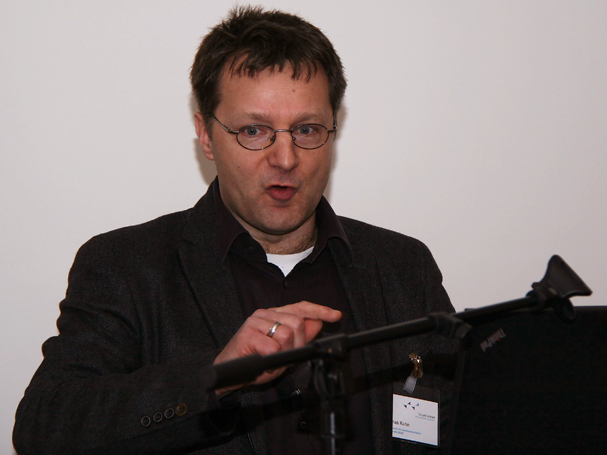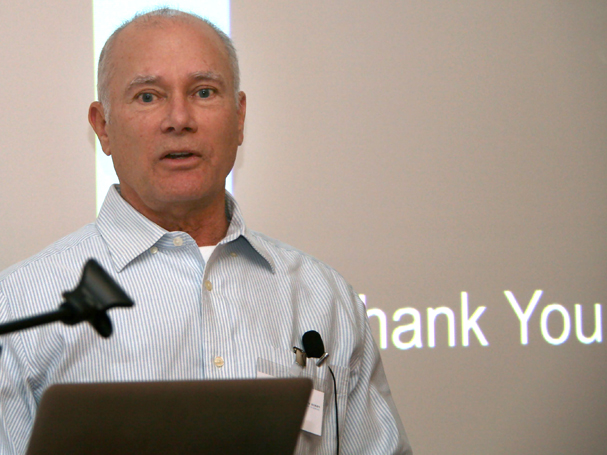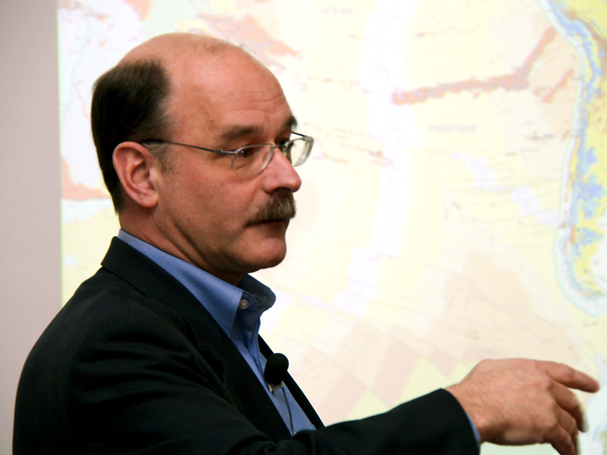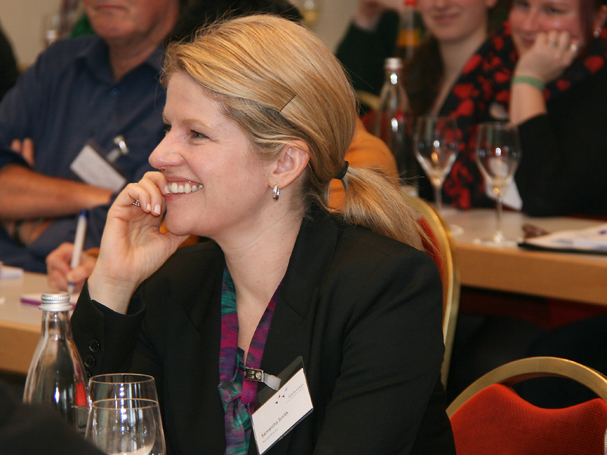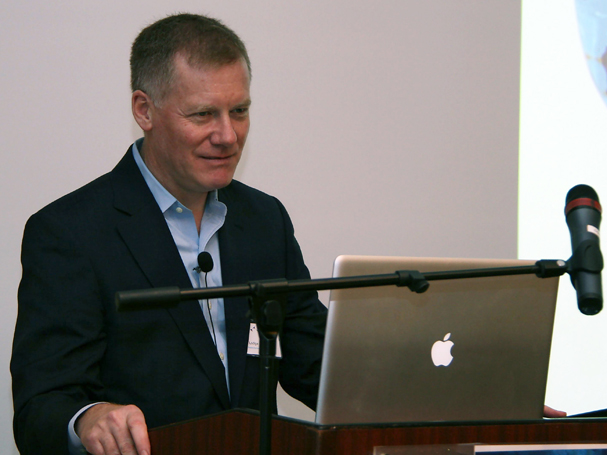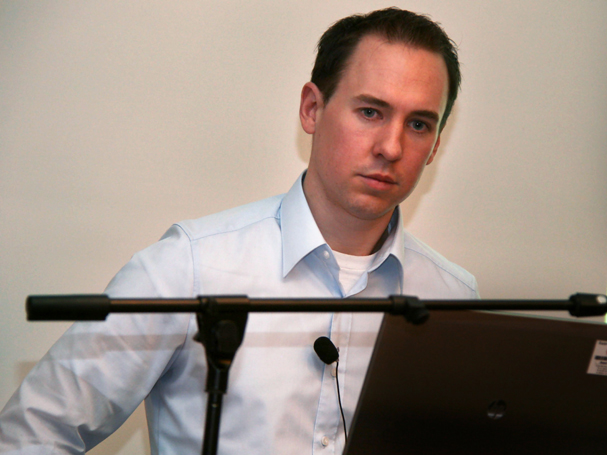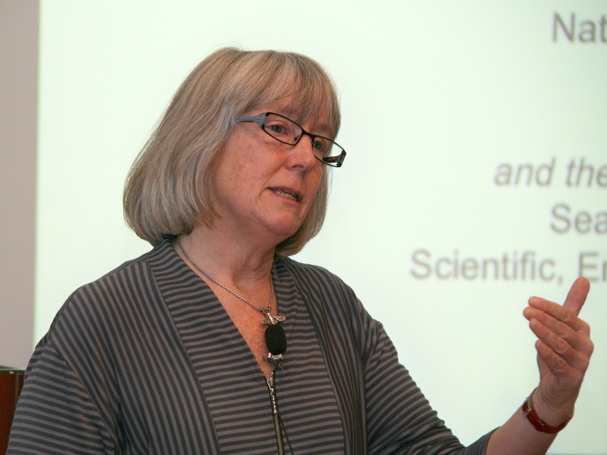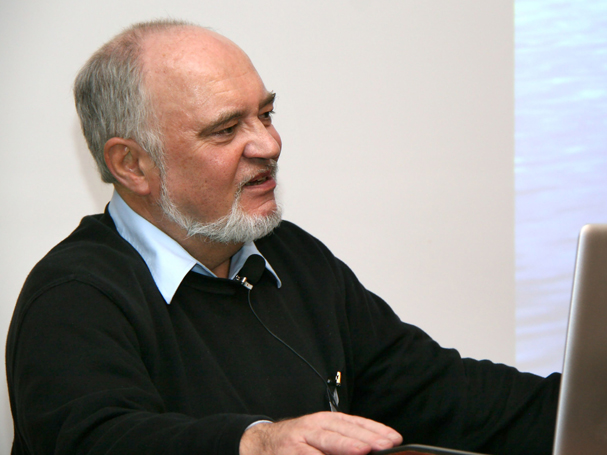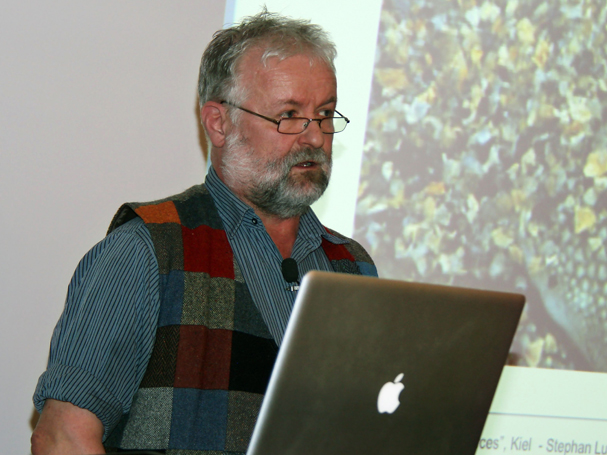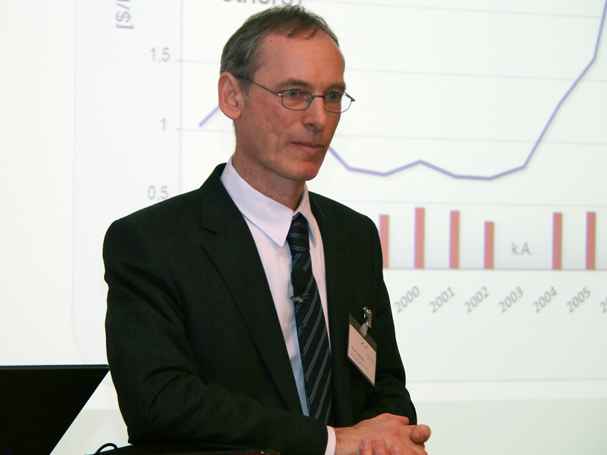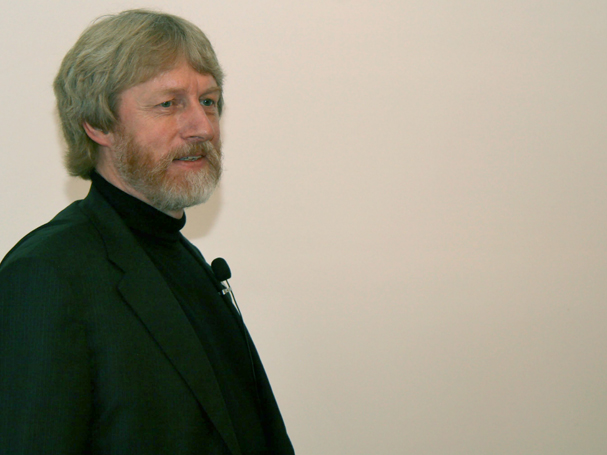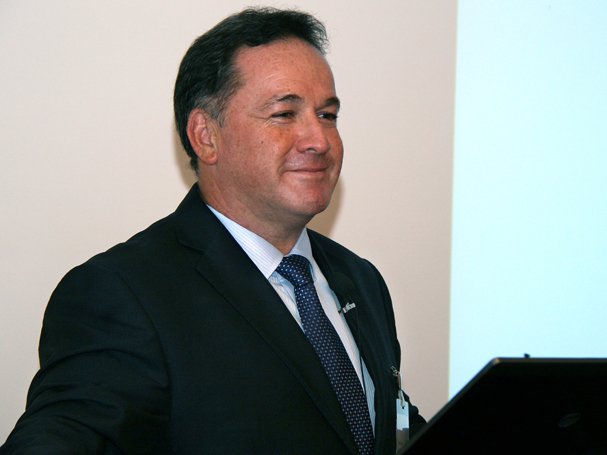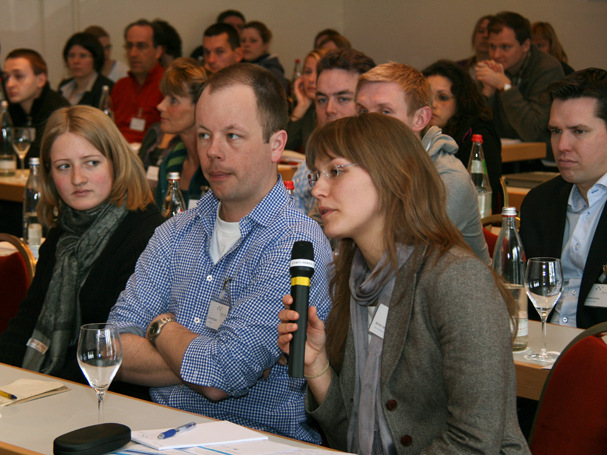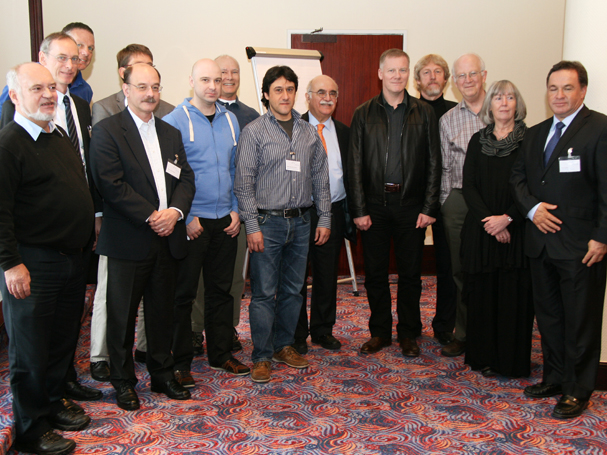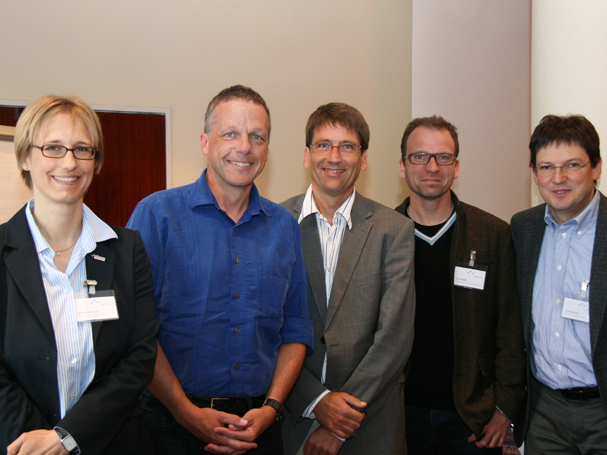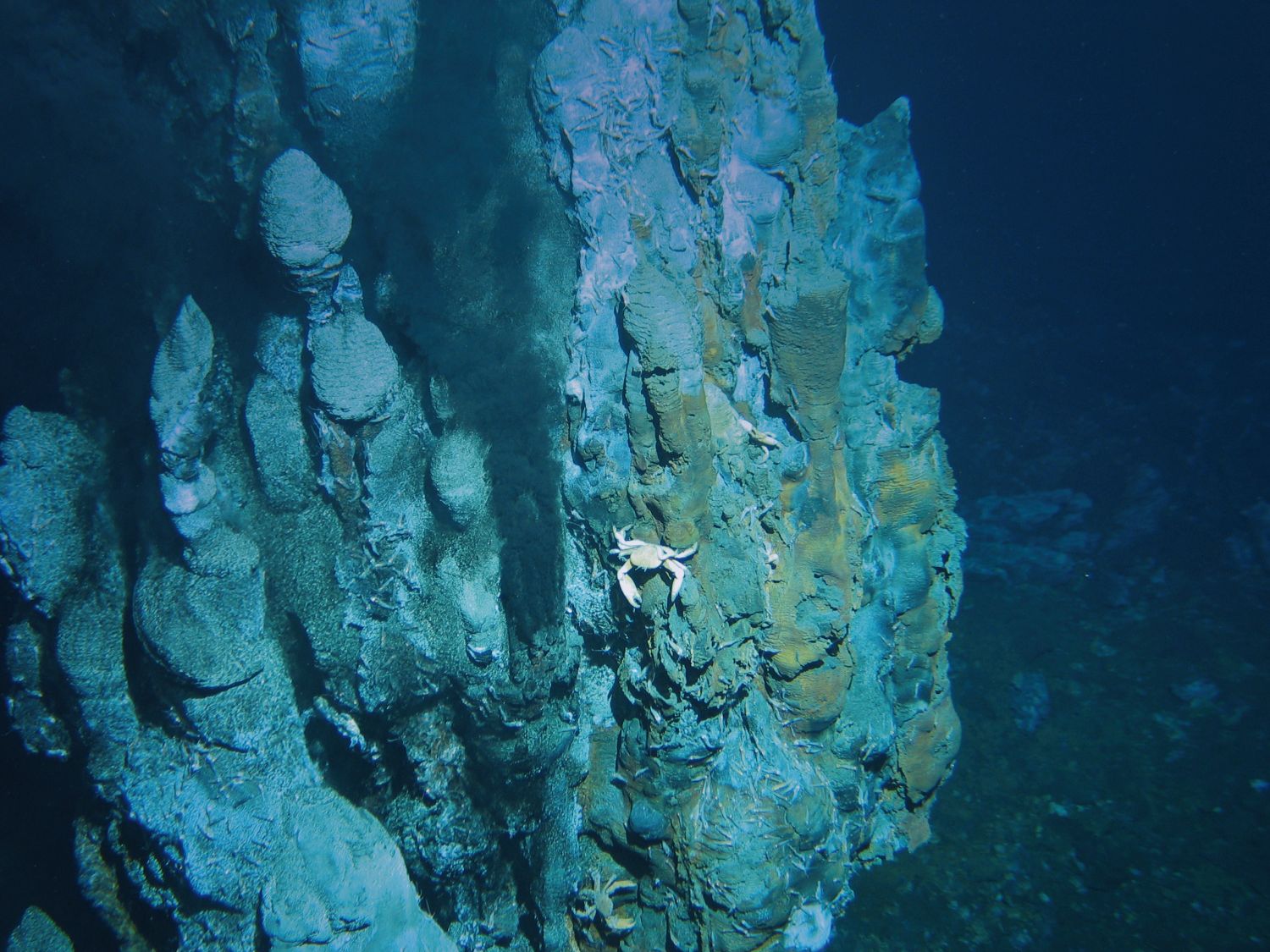Thomas Kuhn, Foto: Future Ocean
The discussion focused mainly on economic considerations, the technical requirements for deep-sea mining, and the impact of exploitation considering environmental and international legal issues. Three types of mineral commodities are currently in the focus of the world´s markets: manganese nodules, deposited on the abyssal plains in water depths around 4,000 to 6,000 meters, cobalt-rich manganese crusts that form on the flanks of old submarine mountain ranges of 800 to 2500 m water depth, and massive sulfides or "black smoker deposits", formed in areas of volcanic activity along the plate boundaries in the oceans at depths of 500 to 5,000 meters. These different ore types may contain metals such as cobalt, nickel, copper, and gold, but also rare metals that are used for the high-tech industry.
Präsentationen:
Theme 1: Scientific Basics
"Genesis, distribution, and resource potential of ferromanganese crust for strategic and critical metals"
Dr. James R. Hein, United states Geological Survey
"Seafloor massive sulfides (SMS) and their resource potential"
Prof. Mark Hannington, Ottawa University
"Distribution of SMS deposits"
Prof. Lawrence Cathles, Cornell University
Theme 2: Mining processes
"Technologies for mining in the deep sea"
Stanislav Verichev, MTI Holland B.V.
"Economic consideration of future marine mining activities and production technology"
Christian Dornieden, Aker Wirth
Theme 3: Environmental impact of mining
"Past German environmental impact studies on manganese nodules"
Dr. Gerd Schriever, BioLab Research Institute
"Protecting the Marine Environment and Biodiversity from Deep-Sea Mining"
Stephan Lutter, World Wide Fund For Nature
Theme 4: Legal and economic considerations
"Law of the Sea and licensing of mining activities"
Michael Lodge, International Seabed Authority
"World metal production and future demands"
Dr. Peter Buchholz, Bundesanstalt für Geowissenschaften und Rohstoffe
"Towards the development of a national regulatory framework for deep sea mining in the Cook Islands nodules"
Paul Lynch, Seabed Mineral Authority Cook Islands
…
